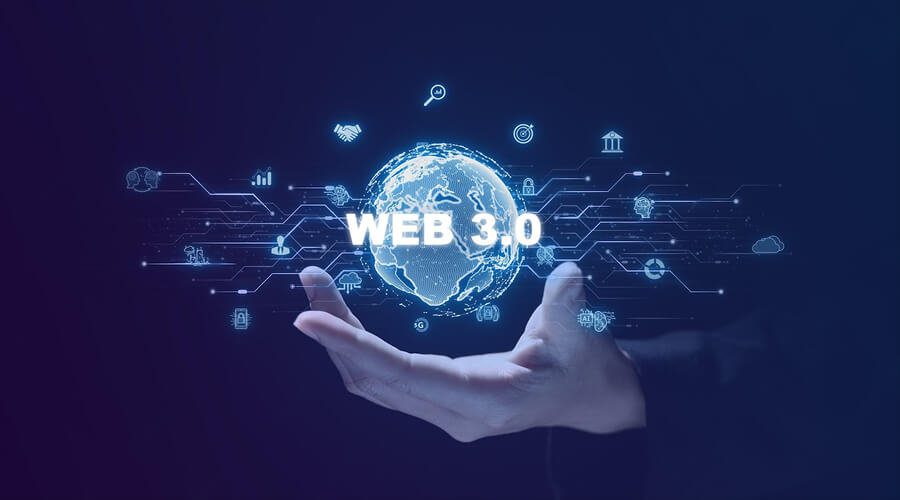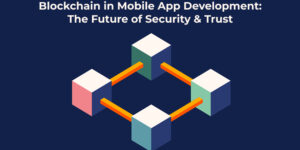
What is new on the internet? Web3 is changing the way digital apps function by giving them the attributes of decentralisation, real ownership and transparency. Learn how blockchain, smart contracts and dApps give you control, give creators more power, create opportunities for businesses that were not there before and establish a safe and interoperable digital ecosystem for the next generation.
If you take a look at how the internet has evolved, you can clearly see major milestones. Moving from static Web 1.0 pages to the interactive, cloud-powered Web 2.0, each evolution expanded digital possibilities but also concentrated control in the hands of a few large tech companies.
Now, Web2 is trying to represent the next big thing for the internet. And what is the goal? It promises to offer a decentralised, user-centric internet that redefines ownership, privacy and trust. Developers and users can participate in a digital ecosystem where control is shared and data is secure.
What is Web3 and its impact on digital apps
Think of Web3 as more like a transformation in how we interact with online systems. At its very core, Web3 is powered by blockchain technology, decentralised protocols and smart contracts to remove central authorities from the process. What this theoretically means is that users get full ownership of their digital identities and assets and developers can create applications that operate without intermediaries.
Applications on the internet that are designed for Web3 in the digital environment are generally referred to as decentralised applications or dApps. Such an app is a radically different concept from traditional apps. While Web2 apps depend on centralised servers, dApps run on distributed networks. The decentralisation makes the system transparent and the users can engage in a trustless way, i.e. without the need for a trusted intermediary and the correctness of the data can be checked by everyone involved.
The core pillars of Web3 app development
1. Decentralisation
Decentralisation shifts data storage and control from a single server to multiple nodes worldwide. By spreading data across a network, Web3 apps prevent censorship, reduce single points of failure and ensure higher data integrity. Users can interact directly with applications, bypassing intermediaries while also retaining full control over their assets and data.
2. Blockchain Technology
It is the underpinning of the functionality of Web3 apps. It records every transaction in an immutable ledger to create transparent and auditable records. You have platforms like Ethereum, Solana, Plugon and Avalanche that provide the infrastructure for dApps, offering advantages in speed, scalability and cost efficiency.
3. Smart Contracts
Smart contracts are used to automate operations within Web3 apps. These are self-executing programs that follow coded rules, reducing human error and eliminating the need for middlemen. Smart contracts help govern transactions, ownership transfers and other interactions which makes digital processes transparent and reliable.
4. Cryptographic Security
To protect user IDs, secure sensitive data and prevent unauthorised access, Web3 apps use the most advanced cryptography to encrypt all the transactions they do. Crypto-based hack protection and carefully implemented functionality make sure that devs and users get the assurances that the platform is trustworthy.
5. Tokenisation and Incentives
With Web3, new economic models are also getting introduced through fungible and non-fungible tokens. Tokens can represent ownership, voting rights, currency or access to services. These mechanisms encourage active community participation, enable new monetisation methods and create incentive-driven ecosystems.
How are Web3 applications reshaping user experiences?

True ownership of digital assets
In Web2, users rent digital services without owning the underlying data. Web3 flips this model over its head, granting full ownership through cryptographic wallets and private keys. NFTs exemplify this ownership, proving control over digital art, in-game assets or property deeds without relying on centralised authorities.
Empowering the creator economy
Content creation and distribution is a process where intermediaries are removed by Web3. Musicians, artists and developers can sell their work directly to the public through NFTs, smart contracts or decentralised finance (DeFi) platforms. Thus, creators can keep a significantly higher percentage of the money flow while at the same time establishing a direct relationship with their fans.
Financial freedom through DeFi
DeFi or decentralised finance, is a platform where users can perform their financial activities such as lending, borrowing, trading or even earning interest on digital assets, without the intervention of banks or brokers. The whole process is done by automated smart contracts which are very reliable and hence, the users get to have full control of their finances while at the same time, the process remains transparent and secure.
Transparent and trustless systems
With the help of blockchain transparency, all transactions on Web3 become verifiable and immutable. This accountability reduces fraud and increases confidence for businesses and consumers alike. From finance to supply chains, Web3 applications offer systems where trust is inherent and not imposed.
Data privacy and control
Digital privacy is redefined with the introduction of Web3 apps. Users have the ultimate freedom of what data to share with whom and under what conditions, using decentralised identity solutions. This design prioritises privacy as a feature and not as an afterthought, empowering you to manage your digital footprint actively.
Interoperability and open ecosystems
Web3 applications have the ability to interconnect seamlessly to create compatible ecosystems. Multiple dApps can integrate their functions, generating innovative solutions faster than in siloed Web2 systems. Open architectures even accelerate this adoption, experimentation and collaboration.
Some of the most popular Web3 dApps
- Uniswap: A decentralised exchange facilitating automated token swaps through smart contracts. Its design enhances liquidity while allowing users to retain full control of their assets.
- Trader Joe: Offers fast, low-cost trading while granting direct ownership of digital assets, requiring a practical realisation of decentralised finance.
- Sushiswap: Offers yield farming, staking and other financial services in a fully decentralised environment with a balance of efficiency and user empowerment.
- Raydium: Enhances market liquidity through automated market makers, supporting smooth transactions and deep trading capabilities.
- Decentralised wallets: Essential for secure asset management, wallets give users control without intermediaries, aligning with Web3’s principles of sovereignty and trust.
Web3 for business development

We saw all the fun side of dApps, but how can businesses leverage Web3? Modern organisations are enhancing operations, building trust and exploring new streams of revenue, all thanks to the magic of Web3. Decentralised systems have reduced the reliance on intermediaries, cut costs and increased process efficiency. Transparent and auditable operations improve customer confidence and strengthen reputations.
New business models have also emerged through tokenisation, NFTs and DeFi integration. Companies can enter previously inaccessible markets and experiment with community driven growth strategies using decentralised autonomous organisations (DAOs) or token incentives. This approach gives organisations agility and resilience in dynamic markets.
Steps to start with Web3 app development

- Research the ecosystem: Begin by understanding the fundamentals of decentralised networks, blockchain platforms and community standards.
- Acquire technical competencies: Learn programming languages like Rust or Solidity, along with blockchain architecture and smart contract development.
- Engage with communities: Work together with peers who share your views on forums, go to meetups and reach out to experienced developers for practical insights.
- Build small projects: Just simple dApps to check your skills.
- Iterate and improve: Incorporate feedback, refine functionality and strengthen security to prepare for scalable applications.
- Launch and scale: Deploy on test networks, collect user feedback and gradually expand the project while maintaining decentralised integrity.
What is ahead for Web3?
Web3 is now becoming the next big thing for the digital future. By shifting control from centralised authorities to individual users and communities, Web3 promises a secure, transparent and open internet. Applications built on decentralised protocols will continue to empower creators, redefine finance and reshape digital interactions.
Just imagine what it could do when you take the concepts of blockchain, smart contracts, tokenisation and decentralised governance and combine them in a way that creates a strong digital ecosystem. This change is being preferred by companies and consumers. Web3 is basically building the next internet which will be based on trust, ownership and innovation as the main principles.
Parting thoughts
The evolution from Web2 to Web3 is a fundamental shift in how digital applications are built, accessed and experienced. This Web2 to Web3 transition empowers you with control, data integrity and transparency while giving you new tools to innovate and grow. Decentralised applications are at the centre of the stage to enable a new type of internet where ownership, security and trust coexist. The future of digital apps is inevitable, you need to embrace it or risk losing relevance






